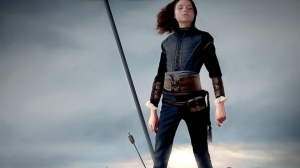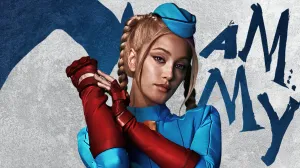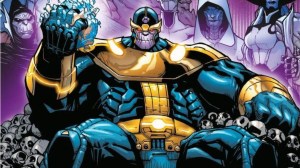When Aquaman hits theaters this weekend, it will be the product of over 75 years of comic book, animation, and other mythology, seeing fruition as a live-action feature film for the first time.
Videos by ComicBook.com
(Unless you count the Mercy Reef pilot, but that’s kind of a whole different animal.)
The film pays tribute to some of that history by doing the same thing most DC and Marvel films do — by naming a number of the comic book creators responsible for some of the character’s best-known stories in the “Special Thanks” section of the movie’s credits.
Having seen an early screening of Aquaman, we had a chance to take notes on which creators made the cut, and we are here to run them down for you — and to explain what their specific contributions were to the Aquaman mythology.
Relative to the previous DC films since Man of Steel, this movie seems to have fewer comic book professionals named in the credits.
Notably absent from the “special thanks” section they usually reserve for the comic book talent who create the characters and stories on which the movies are based was Geoff Johns.
Johns, who co-wrote the film and serves as an executive producer, was the writer of Aquaman for a best-selling run in 2011, and he is one of only a handful of modern writers who can make that claim. He also helped to shape the modern take on the mythology around Atlantis.
Creators
Aquaman was created by Mort Weisinger and Paul Norris in More Fun Comics #73 in 1941, and these two are credited together as the creators of the character in the film’s credit.
It is typically rare for comic book companies to credit individuals or creative teams as “creators,” but it can happen — especially when the creators have negotiated such a credit in the comics over the years.
DC tends to list the creators of top-tier characters in many of their comics. They have also had a number of protracted legal battles with the creators of Superman over the years, which have laid out some best practices for both giving credit and compensation, and avoiding future lawsuits as much as one can in a business that was built in large part on manipulating young and poor people into giving up valuable intellectual property for next to nothing.
Weisinger was by far the name that had more of a long-lasting impact on DC as a whole; he was the editor for the Superman titles for about a decade, and was a controversial figure during that tenure.
In addition to Aquaman, he is credited with co-creating Green Arrow, Johnny Quick, and the original Vigilante (a Western hero with almost no ties to the version Marv Wolfman would retool decades later). He is not new to Hollywood, either; Weisinger served as story editor for the The Adventures of Superman television series.
Norris had fewer notable creations or major contributions to mainstream superhero comics. Along with Weisinger, he created Sandy, the sidekick to Sandman, whose superhero costume and identity had been set up by Weisinger and Norris, updating him from the more noir-detective-inspired hero he had been at first. He also worked on Tarzan and Magnus, Robot Fighter comics at Gold Key after his service in World War II. Outside of Aquaman, he is probably best-known for a lengthy run on the strip Brick Bradford from 1952 until his retirement in 1987. Norris was the second and final artist to work on the strip, which launched in 1933.
Nick Cardy
Nick Cardy broke into comics working for Will Eisner at the Eisner and Iger shop, and then years later was inducted into the Will Eisner Comic Book Hall of Fame for his decades of work.
Cardy began at DC Comics in 1950 and did some of his best work as the artist on Aquaman and Teen Titans. When Aquaman launched as a title for the first time (the character had previously appeared in anthology books like More Fun Comics and Adventure Comics), the series lasted for 56 issues. Cardy drew the first 39, and provided cover art for the rest of the series after he left.
Several of the Atlantean elements — and most notably Mera — were co-created during Cardy’s run on Aquaman, and he would continue to return to characters like Aqualad (later Tempest), Arthur’s comic book sidekick, during his time on Teen Titans.
Cardy succeeded his friend Al Plastino as the artist on the Batman newspaper strip in the late ’60s, and went on to be one of DC’s most recognizable cover artists in the ’70s.
Peter David

Peter David was largely responsible for the reworking of Atlantis as a technologically-advanced civilization, which fell because of hubris and ultimately embraced sorcery as a means of staying alive at the bottom of the ocean.
While other artists had toyed with similar ideas throughout the years, David’s The Atlantis Chronicles really set the history of the culture in stone, in much the same way that John Byrne’s World of Krypton had done for Superman’s homeworld.
A few years later, David would write almost fifty issues of Aquaman, becoming a controversial, but best-selling, writer for the character. It was during his run that Arthur became a long-haired, bearded, often shirtless badass, and that visual model has largely been followed in other media, in Justice League United, Batman: The Brave and the Bold, and now in the movie. David also pitted Aquaman against a foe who briefly stole his powers and commanded a school of pirahnas to attack Arthur, costing the hero his hand. It was replaced with a harpoon.
Ramona Fradon

Ramona Fradon was one of the first well-known female artists in comics, and the artist behind many of Aquaman’s earliest appearances.
Fradon also co-created a variety of characters, from Jack-O-Lantern to Metamorpho, and continues to draw to this day at age 92.
Fradon co-created Aqualad during her time on Adventure Comics, when she was drawing the Aquaman feature there. While she worked on a number of superhero books, Fradon had said that she thought her style was best suited to mysteries, something she did a lot of after a brief flirtation with working at Marvel in the ’60s.
Besides superhero comics, Fradon, too, worked in syndicated comic strips: she was the artist behind Brenda Starr, Reporter for 15 years, from 1980 until 1995.
After her ostensible retirement in 2010, Fradon worked on a pair of Mermaidman stories for Bongo’s SpongeBob Comics, an obvious homage to her own work on Aquaman.
Bob Haney
Bob Haney could exist at the center of a Venn diagram between several of the other creators we have already talked about.
A prolific writer of his time, Haney co-created the Teen Titans and Metamorpho, working with Cardy and Fradon frequently.
Haney started writing war and crime comics for companies like Fawcett and Harvey before the Comics Code crackdown of the mid-’50s drove a lot of comics publishers out of business.
It was Haney who created Nuidis Vulko (the character played in the film by Willem Dafoe) with The Brave and the Bold artist Howard Purcell. That Purcell’s name does not appear in the “Special Thanks” section is likely because the look of Vulko was designed by Cardy.
Esteban Maroto

Esteban Maroto is a horror and fantasy artist from Spain, whose DC superhero work includes Amethyst, Zatanna, and Atlantis Chronicles with writer Peter David.
He also did work on titles like Creepy, Eerie, Savage Sword of Conan, and Cadillacs and Dinosaurs over the years.
The Atlantis Chronicles fit Maroto’s sensibilities perfectly, since it blended the mythology of DC’s sorcerer Arion with the science of Aquaman’s Atlantis.
Jack Miller
Jack Miller was the writer who co-created Mera. While he worked on a number of titles at DC, including Action Comics, Detective Comics, Sgt. Rock, Aquaman, Adventure Comics, and more, the three most notable creations to his credit are Mera; Rip Hunter (immortalized on DC’s Legends of Tomorrow by Arthur Darvill.
Miller was also an editor at DC in addition to being a writer, working for years on anthology superhero titles like Showcase and Strange Adventures as well as on numerous romance books like Swing With Scooter, Young Love, and Heart Throbs.
Paul Pelletier

Paul Pelletier took over as the artist on Aquaman with #30 in the New 52 era, during Geoff Johns’s run as the writer on the title.
Given that many of Johns’s ideas came to the screen in this film, most of his collaborators on Aquaman stories are named in the Special Thanks section even though, as noted above, Johns himself did not get a Special Thanks credit.
Pelletier drew the “Throne of Atlantis” storyline, which centered on Aquaman and the Justice League defending the surface world from an attack by Atlantis — a plot point with relevance to this film, obviously, although the Justice League was nowhere to be found and only tangentially mentioned.
Justice League: Throne of Atlantis is also an animated feature film available on DVD, Blu-ray, digital, and streaming on the DC Universe app.
Joe Prado

Joe Prado is best known as an inker who frequently collaborates with DC Comics star Ivan Reis. He inked the first year or so of The New 52 Aquaman run, as well as doing some fill-in pencilling when Reis was behind schedule or working on other projects.
Since much of the backstory for Aquaman was fine-tuned in the New 52, presumably with an eye toward taking decades of the best ideas and building them up for a movie or TV project, Reis and Prado were named in the credits since their contribution to the first year of that title resulted in a number of scenes and images that were pretty faithfully presented in the movie.
The pair are also responsible for the look of The Trench.
Ivan Reis
As mentioned above, Ivan Reis is a superstar penciller at DC Comics and a frequent collaborator with Geoff Johns, who wrote and produced Aquaman. He created a number of characters and concepts along with Johns while the pair worked on both Aquaman and Justice League during The New 52 era.
Since much of the backstory for Aquaman was fine-tuned in the New 52, presumably with an eye toward taking decades of the best ideas and building them up for a movie or TV project, Reis and Prado were named in the credits since their contribution to the first year of that title resulted in a number of scenes and images that were pretty faithfully presented in the movie.
The pair are also responsible for the look of The Trench, with Reis named as a co-creator.








